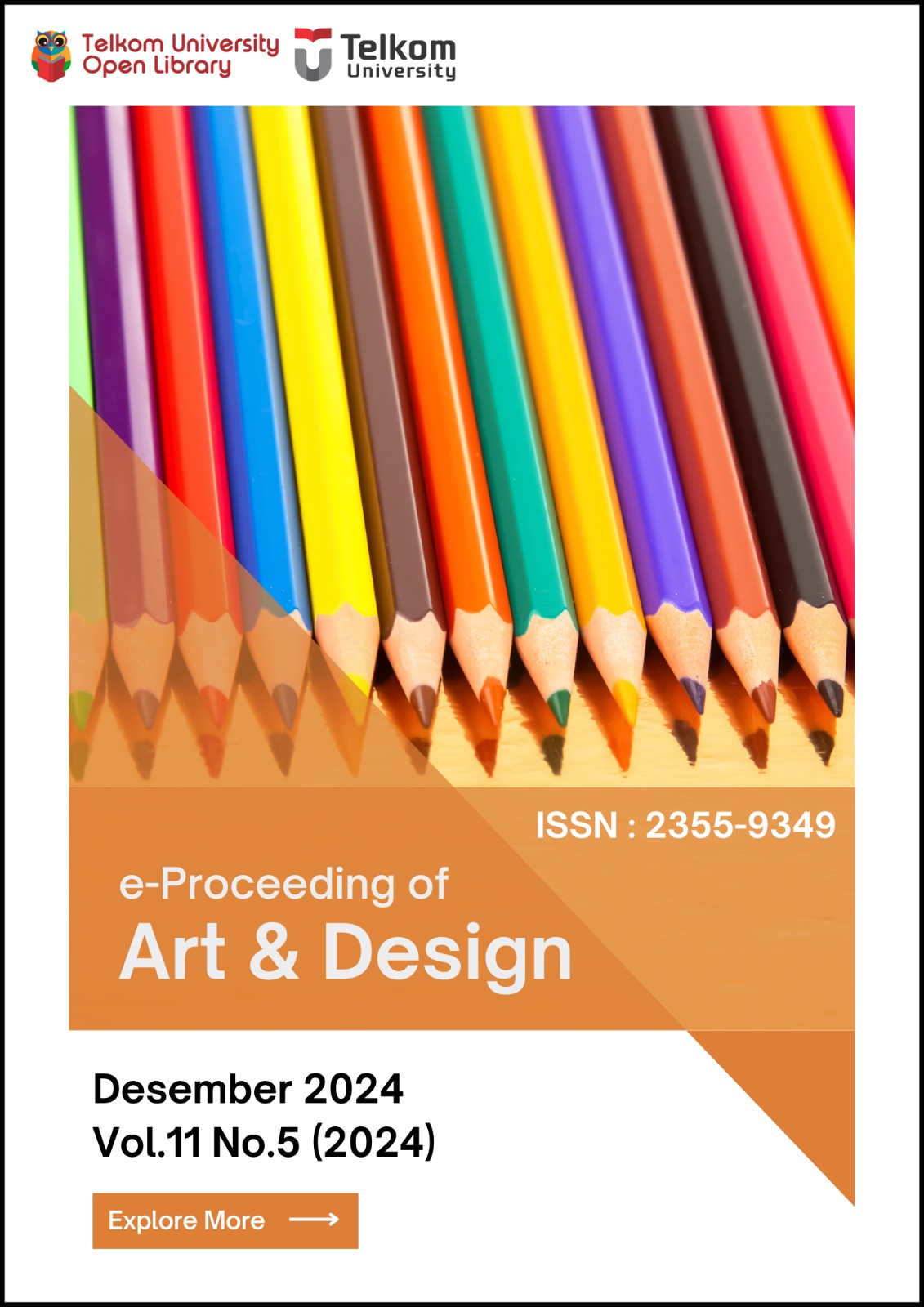DIRECTING FOR "BAYANG KU, BAYANG MU" SHORT FILM
Abstract
Since the Covid 19 virus spread around the world in 2020, the virus has affected almost every aspect of people's lives in Indonesia. From the economy, society, and education. Students are taking online classes without knowing when they will come back to school or college. Many students became detached from society and had social withdrawal. This research aims to explore the phenomenon of social isolation caused by the COVID-19 pandemic, especially in teenagers and young adults and how this phenomenon can be used as a basis for developing a short film as a final project. Through a several data collection method such as literature review, observations, questionnaires and analysis from the references of several similar works, this research seeks to identify that the pandemic has caused drastic changes in teenagers and young adult social lives, with restrictions such as lockdowns and social distancing triggering self-isolation and deep feelings of loneliness. Based on the data that will be obtained, the author intends to produce a short film that depicts in detail the emotional experiences of teenagers and young adults during social isolation, exploring feelings of loneliness, worries about the future, and their efforts to find human connections in difficult situations.
Keywords: adolescent, loneliness, self isolation, short film, social life
References
Al Ansory, M. Z., & Erdhina Adi, A. (2024). Impact of radicalism and terrorism through social media among youth in the Film The Lone Wolf Next Door. International Journal of Visual and Performing Arts, 6(1), 38–39.
Anderson, R. (2020). Students as real people: Interpersonal communication and education. Routledge.
Anggraini, L., & Nathalia, K. (2014). Desain Komunikasi Visual; Dasar-Dasar Panduan untuk Pemula. Bandung. Nuansa Cendekia.
Baksin, A. (2006). Jurnalistik televisi. Simbiosa Rekatama Media.
Bond, B. J. (2021). Social and parasocial relationships during COVID-19 social distancing. Journal of Social and Personal Relationships, 38(8), 026540752110191. https://doi.org/10.1177/02654075211019129
Courtet, P., OliÈ, E., Debien, C., & Vaiva, G. (2020). Keep Socially (but Not Physically) Connected and Carry on. The Journal of Clinical Psychiatry, 81(3). https://doi.org/10.4088/jcp.20com13370
Dibble, J. L., Hartmann, T., & Rosaen, S. F. (2016). Parasocial Interaction and Parasocial Relationship: Conceptual Clarification and a Critical Assessment of Measures. Human Communication Research, 42(1), 21–44. https://doi.org/10.1111/hcre.12063
Effendy, O.U., Ilmu Komunikasi : Teori Dan Praktek. Editorial: Bandung, PT Remaja Rosdakarya, Printing, 2011.
Henley, T. B. (2019). Hergenhahn’s An Introduction to the History of Psychology (8th ed.). Cengage Learning.
Himawan Pratista. (2008). Memahami film. Homerian Pustaka.
Hwang, K., & Zhang, Q. (2018). Influence of Parasocial Relationship between Digital Celebrities and Their Followers on Followers’ Purchase and Electronic word-ofmouth intentions, and Persuasion Knowledge. Computers in Human Behavior, 87, 155– 173. https://doi.org/10.1016/j.chb.2018.05.029
Johnson, S. U., Amundsen, O. M., Johnson, M. S., Hoffart, A., Hals¯y, ÿ., Skjerdingstad, N., Ebling, S., & Ebrahimi, O. V. (2022). Psychiatric symptoms in COVID19-positive individuals in the general population: Trajectories of depression, anxiety, and insomnia. Psychiatry Research, 317, 114806. https://doi.org/10.1016/j.psychres.2022.114806
Keast, G. (2014). Shot psychology : the filmmaker’s guide for enhancing emotion and meaning. Kahala Press.
Loades, M. E., Chatburn, E., Higson-Sweeney, N., Reynolds, S., Shafran, R., Brigden, A., Linney, C., McManus, M. N., Borwick, C., & Crawley, E. (2020). Rapid Systematic Review: The Impact of Social Isolation and Loneliness on the Mental Health of Children and Adolescents in the Context of COVID-19. Journal of the American Academy of Child & Adolescent Psychiatry, 59(11), 1218–1239. https://doi.org/10.1016/j.jaac.2020.05.009
Maslow, A. H. (1943). Theory of Human Motivation. In Psychological Review (Vol. 50, pp. 370–396). Wilder Publications.
Nasrudin, Kusumaningrum, U. A., & Prihaninuk, D. (2020). DAMPAK ISOLASI SOSIAL SELAMA PANDEMI COVID 19 TERHADAP REMAJA : AKTIFITAS, EMOSIONAL, STRESS-ADAPTASI DAN STRATEGI KOPING REMAJA SELAMA PANDEMI COVID-19 DI INDONESIA. EduNursing, 4(2), 110–121.
Petrie, D. W., & Boggs, J. M. (2017, October 17). The Art of Watching Films, 9th Ed. New York, NY: McGraw Hill Education. https://id.scribd.com/document/731513766/Download-pdf-The-Art-Of-WatchingFilms-9Th-Edition-Dennis-W-Petrie-ebook-full-chapter
Plantinga, C. (2009). Moving viewers : american film and the spectator’s experience. University Of California Press.
Putra, W.T.G., Hakim, A.L., Kartasudjana, T. (2021). Working virtually, exhausting in reality: Virtual cause of burnout in the age of a pandemic. Dynamics of Industrial Revolution 4.0: Digital Technology Transformation and Cultural Evolution, 119-122.
Rustan, S. (2008). Layout Dasar dan Penerapannya. In Google Books. Gramedia Pustaka Utama. https://books.google.co.id/books?id=31hjDwAAQBAJ&printsec=frontcover&hl=id#v =onepage&q&f=false
Smith, K., & Hill, J. (2019). Defining the nature of blended learning through its depiction in current research. Higher Education Research & Development, 38(2), 383–397. https://doi.org/10.1080/07294360.2018.1517732
Sundar, S. S., & Limperos, A. M. (2013). Uses and Grats 2.0: New Gratifications for New Media. Journal of Broadcasting & Electronic Media, 57(4), 504–525. https://doi.org/10.1080/08838151.2013.845827






